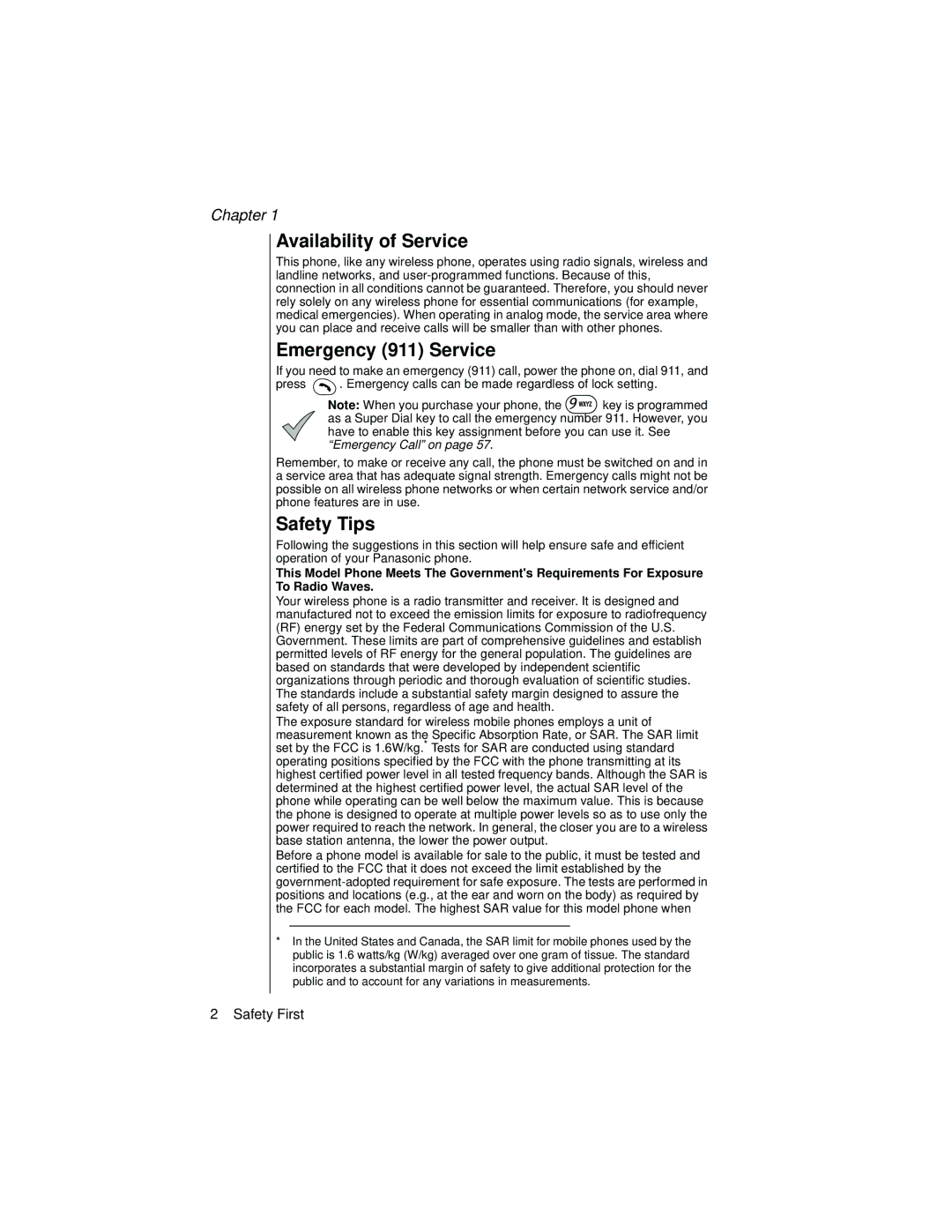
Chapter 1
Availability of Service
This phone, like any wireless phone, operates using radio signals, wireless and landline networks, and
Emergency (911) Service
If you need to make an emergency (911) call, power the phone on, dial 911, and
press ![]() . Emergency calls can be made regardless of lock setting.
. Emergency calls can be made regardless of lock setting.
Note: When you purchase your phone, the ![]()
![]()
![]() key is programmed as a Super Dial key to call the emergency number 911. However, you have to enable this key assignment before you can use it. See “Emergency Call” on page 57.
key is programmed as a Super Dial key to call the emergency number 911. However, you have to enable this key assignment before you can use it. See “Emergency Call” on page 57.
Remember, to make or receive any call, the phone must be switched on and in a service area that has adequate signal strength. Emergency calls might not be possible on all wireless phone networks or when certain network service and/or phone features are in use.
Safety Tips
Following the suggestions in this section will help ensure safe and efficient operation of your Panasonic phone.
This Model Phone Meets The Government's Requirements For Exposure To Radio Waves.
Your wireless phone is a radio transmitter and receiver. It is designed and manufactured not to exceed the emission limits for exposure to radiofrequency (RF) energy set by the Federal Communications Commission of the U.S. Government. These limits are part of comprehensive guidelines and establish permitted levels of RF energy for the general population. The guidelines are based on standards that were developed by independent scientific organizations through periodic and thorough evaluation of scientific studies. The standards include a substantial safety margin designed to assure the safety of all persons, regardless of age and health.
The exposure standard for wireless mobile phones employs a unit of measurement known as the Specific Absorption Rate, or SAR. The SAR limit set by the FCC is 1.6W/kg.* Tests for SAR are conducted using standard operating positions specified by the FCC with the phone transmitting at its highest certified power level in all tested frequency bands. Although the SAR is determined at the highest certified power level, the actual SAR level of the phone while operating can be well below the maximum value. This is because the phone is designed to operate at multiple power levels so as to use only the power required to reach the network. In general, the closer you are to a wireless base station antenna, the lower the power output.
Before a phone model is available for sale to the public, it must be tested and certified to the FCC that it does not exceed the limit established by the
*In the United States and Canada, the SAR limit for mobile phones used by the public is 1.6 watts/kg (W/kg) averaged over one gram of tissue. The standard incorporates a substantial margin of safety to give additional protection for the public and to account for any variations in measurements.
2 Safety First
